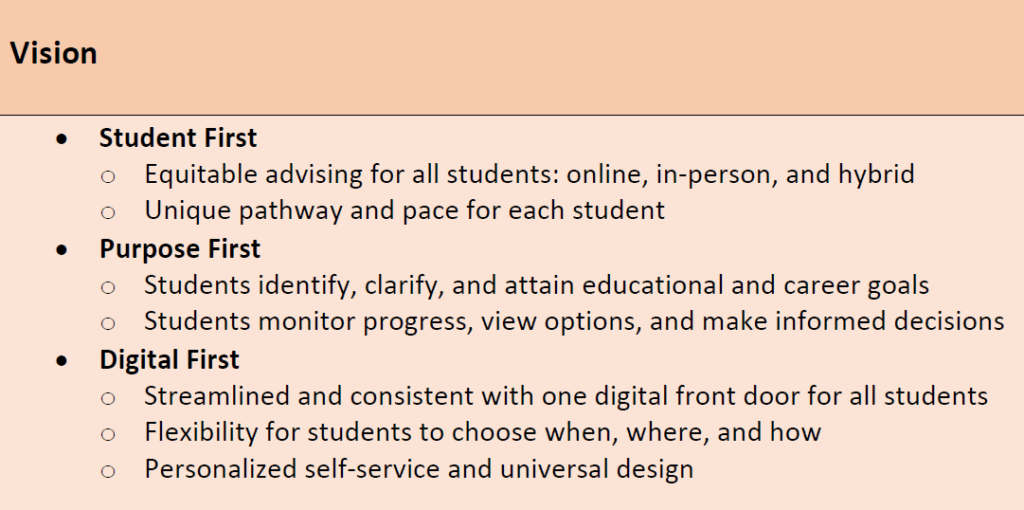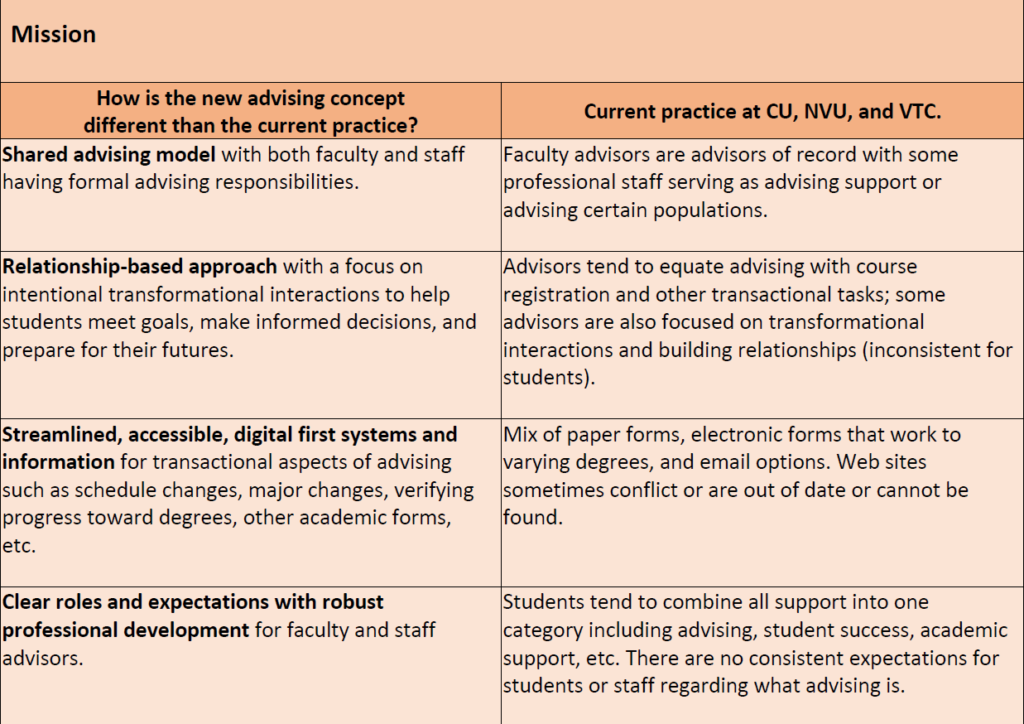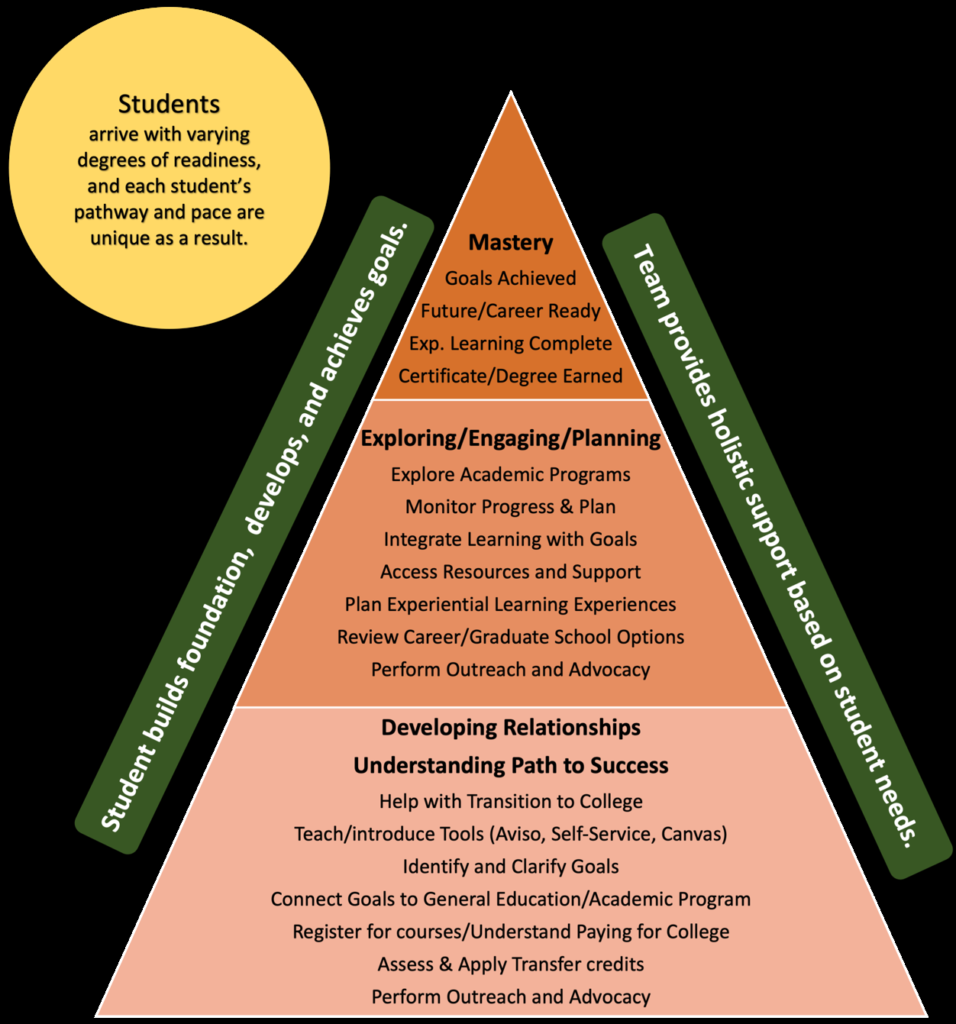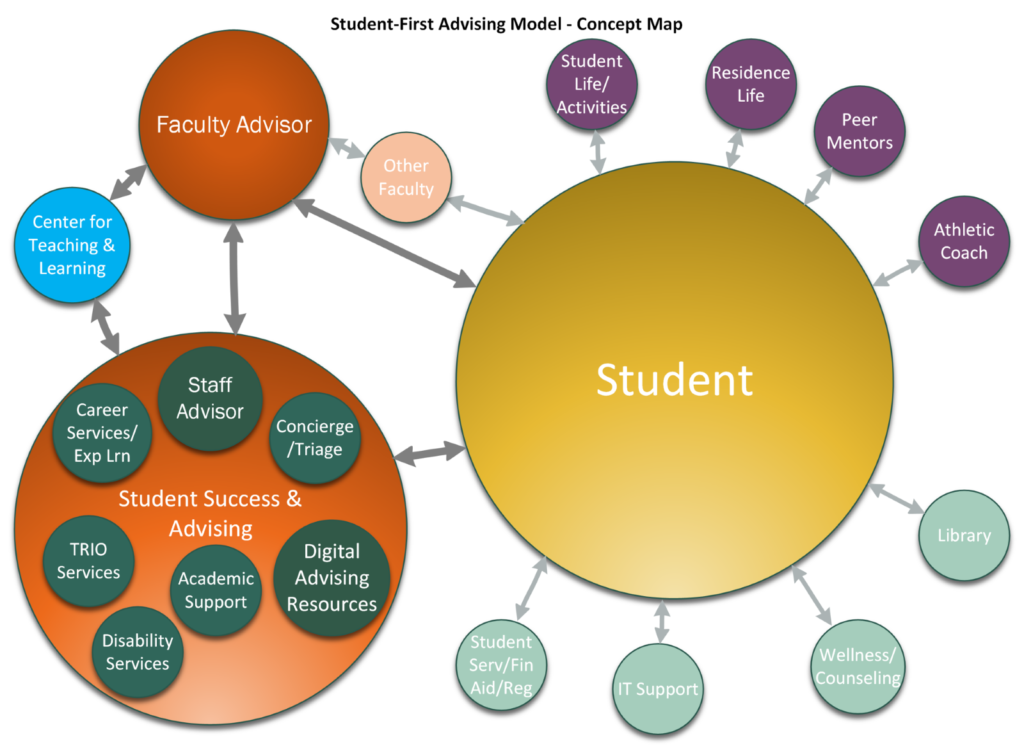This model is being presented to the faculty assemblies and will continue to be updated as we finalize our design. For additional context, please see Student Experience Team Update (4/11/22) and Academic Operations Team Update (4/11/22).
Vision and Mission


Advising Approach: Student Advising Hierarchy of Needs
The advising approach is developmental and holistic to accommodate all student needs. Each student will
have both a faculty advisor and a staff advisor for holistic support as they navigate their unique path to
success. The student-centered, relationship-based approach is designed to increase each student’s sense of
belonging, support each student’s overall wellbeing, and result in greater student success outcomes than
realized through current practices.

Advising Model
Students prefer fewer departmental silos, a single “front door” (whether remotely or in-person) where
common questions can be addressed, and the flexibility to choose when, where, and how they access advising.
The advising model provides a “one-stop” Student Success & Advising Center with expanded hours and digital
and physical “front door” access.
The investment in additional staff will reduce, and strive to eliminate, existing achievement gaps among
underserved student groups while increasing retention and graduation rates for all students and resulting in
increased VSU revenues. Staff additions are projected to result from a combination of reassignments and new
hires. Due to shared goals, integrated functions, and common professional development needs, the team
recommends including advising, career and experiential learning, academic support, and disability services
together organizationally.
The advising team envisions common web-based functionality and access for all services included on the
concept map.

